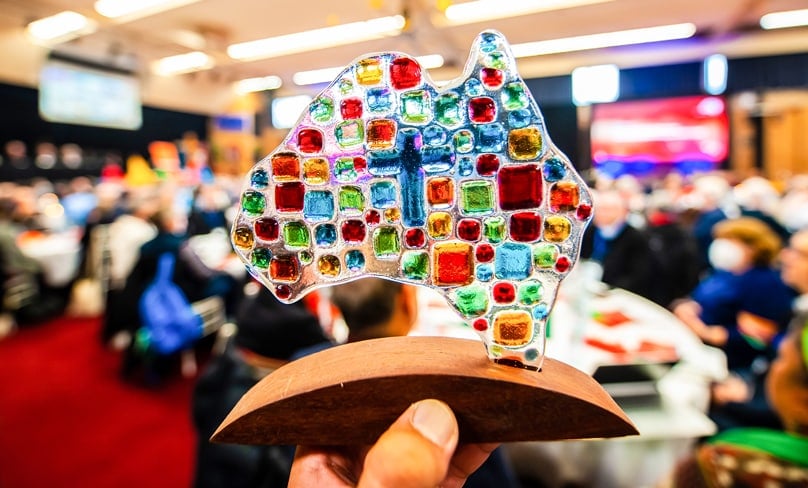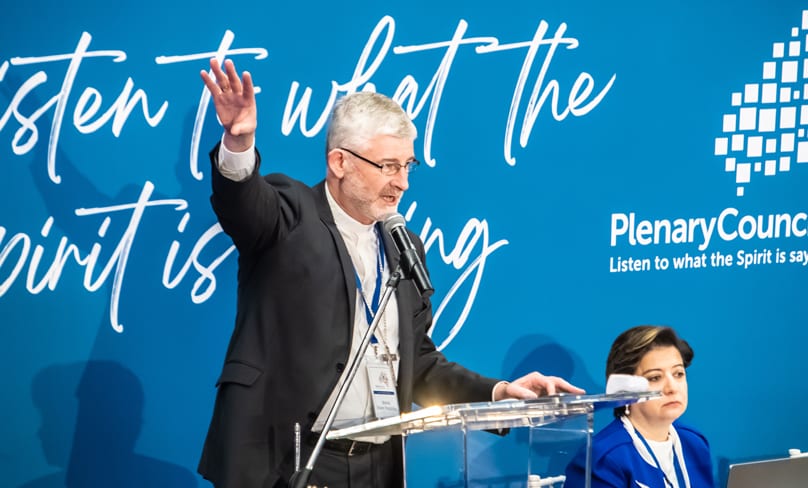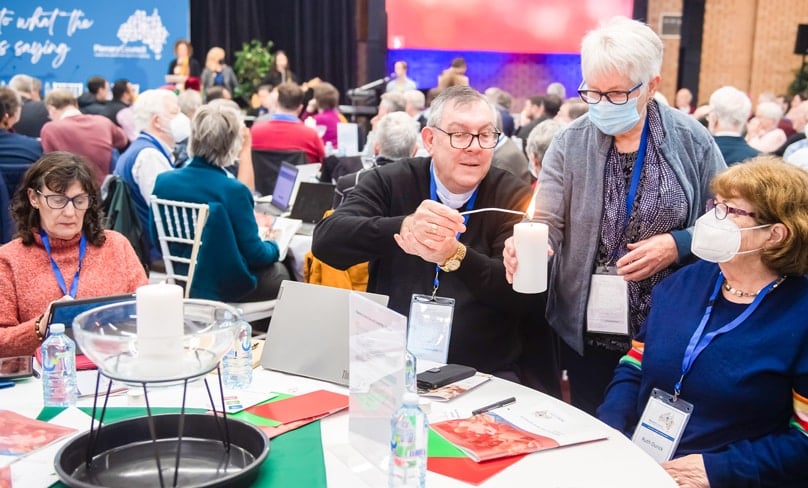
The Plenary Council has apologised formally to victims, survivors and families of child abuse and has committed to a further investigation into the systemic factors that facilitated it within the Church, after successful votes at the second assembly.
“As a Plenary Council, we recommit the Catholic Church in Australia to responding transparently, with justice and compassion, to those who have been abused, whether they approach the Church directly or through the government’s National Redress Scheme or through civil litigation,” the Plenary Council’s statement reads.
Local memorials for victims and survivors of child abuse will also be encouraged where appropriate, “as a tangible recognition of the harm done through abuse and the need for special care for children”.
The annual “Safeguarding Sunday” will be renamed, in consultation with those harmed by abuse, and the Bishops Commission for Liturgy will “develop appropriate rituals and liturgical resources” for parishes.
Members of the Plenary Council participated in a communal “ritual of lament” for victims of child abuse, which involved the sprinkling of ashes on the body as a sign of repentance.

The Plenary Council Vice-President, Bishop Shane Mackinlay of Sandhurst, spoke on the liturgical ritual at the evening media briefing on 4 July.
“Mindful of how significant this was, and how important that we give it really serious weight, we decided to set it in a liturgical context, a prayerful context,” Bishop Mackinlay said.
“Our discussion and discernment and voting on the motions was set in a lament.
“There was an extended and quite beautiful ritual that we began with, and then we had discussion interspersed with other periods of prayer, before voting, and then a longer period again at the end.”
He described it as a “good model of how these things can be done”.

An amendment from the floor was taken up to have the Australian Catholic Bishops Conference, Catholic Religious Australia and the Association of Ministerial Public Juridical Persons conduct a new study into the systemic factors involved in child sexual abuse.
“It seemed to us in the drafting committee that it had good merit to be considered, to be put to the assembly, it was introducing something that genuinely strengthened and complemented the motion that was there, and it was strongly welcomed by the assembly more broadly,” Bishop Mackinlay said.
“In terms of who might be involved … one of the obvious groups to draw on, apart from the work that was done in the Royal Commission, there’s a unit in the ACU that’s done some extensive work on child protection and the situation in institutions, particularly in the Church, around safeguarding and failures in safeguarding.”
Br Gerard Brady, Province Leader of the Christian Brothers, approved of an independent study, adding that “the Church cannot critique itself.”
“The Church has to have groups from outside, who are trained, who are academically attuned to asking the right questions, so that the research can [have] depth and take us to another stage,” Br Brady said.
Related Articles:
